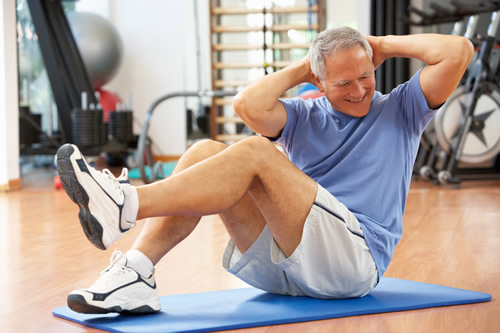Bridging the Gap Between Seniors and Recreational Sport and Fitness Programs
December 16, 2014
Seniors may be overlooked when thinking about adding diversity to your sports and fitness programs when the fact is that many seniors share the same barriers when facing sport participation.
Community recreation and sport programs can be great for older people who feel isolated by helping them build connections as well as open up other possibilities for participation in other activities. Research shows that active engagement in regular physical activity can help older adults remain independent, lower health care requirements and increase lifespans.
Common barriers for participation include:
- Health related issues or injuries
- Limited or no transportation options
- Accessibility
- Unaware that programs exist for them
- Lack of facilities or programs
- Financial concerns
How can I recruit older adults?
It’s all about location – Recruitment and participation will heavily depend on where the program is being offered. Urban environments tend to have more in place for seniors regarding facilities, transportation, and accessibility whereas rural communities may have some difficulties in overcoming these barriers. See if you can use local churches, school gymnasiums, and parks. Before committing to a particular facility, check that sidewalks and entrances are maintained, that there are few steps, clear signage, decent lighting, accessibility (e.g. wheelchair ramps), and access to washrooms. If possible, aim to provide transportation, for example a mini bus or organize a car pool or check that the facility is easy to get to via local buses, etc.
Work with existing groups in familiar settings – Partnerships with existing community initiatives is essential, check out what is already available to see if there is an opportunity for you to work together. Linking sport and recreation programs with what is already available improves the odds that a new program will succeed and flourish.
Get the word out – If you are sending out any kind of marketing paraphernalia, use appropriate language by focusing on words like “building strength and balance” rather than “fall prevention”. While the number of seniors who are internet savvy is growing, new technologies can still be frustrating and confusing for some people. Current surveys show that word of mouth still works best, particularly in rural communities so include announcements in church bulletins and newspapers, put up flyers in grocery stores or the local library, or ask some prominent community members to spread the word. If you have the funding, other options include radio announcements/ads, or the use of local cable channels.
How do I keep active adults in my program?
Create a welcoming environment – Ensure that first experiences are positive, rewarding and provide a sense of belonging. Give plenty of opportunities for socialization so that people can make connections, discuss their experiences and achievements and hopefully make a new friend. Encourage participants to set their own goals that are tailored for their particular fitness level, motivations and lifestyle.
Provide opportunities for learning – Getting in a guest speaker to discuss relevant health topics such as good nutrition, recovery and retaining independence. For those that suffer from previous injuries or a chronic health condition, be open to addressing their concerns and offer up modified exercises. Activities should focus on individual components of overall fitness such as stamina, balance, strength and flexibility.
Offer discounts to seniors – The majority of seniors are on a fixed income and may not have the money available to spend on an extracurricular class. Offering free trials for classes or discounts is a common practice and can encourage hesitant seniors to check out your program.
Health problems increase with age and tend to be the biggest barrier to sport participation for adults over 60. In order to increase participation for this age group, it’s recommended that programs focus on providing support for those with health problems/disabilities and work on increasing awareness and confidence about the levels of exercise and types of activities that might be beneficial. Coming up with ways to overcome these issues is not impossible and most of the time just requires some creativity and co-operation.
References from the SIRC Collection:
1. Cosgrove C, Sun B. Age-friendly initiatives: Breaking down barriers offers benefits for all. Active Living: Newsletters. January 2009;:N6-N7.
2. Eady R. Seven barriers to life span engagement:health and well-being across generations and natural physical environments. Journal On Active Aging. March 2011;10(2):34-43.
3. Mathews A, Laditka S, Logsdon R, et al. Older Adults’ Perceived Physical Activity Enablers and Barriers: A Multicultural Perspective. Journal Of Aging & Physical Activity. April 2010;18(2):119-140.
4. Strath S, Isaacs R, Greenwald M. Operationalizing Environmental Indicators for Physical Activity in Older Adults. Journal Of Aging & Physical Activity. October 2007;15(4):412-424.
5. Three programs that reduce physical activity barriers for older adults. Active Living: Newsletters. March 2008;:N4-N5.
6. ZALEWSKI K, ALT C, ARVINEN-BARROW M. Identifying Barriers to Remaining Physically Active After Rehabilitation: Differences in Perception Between Physical Therapists and Older Adult Patients. Journal Of Orthopaedic & Sports Physical Therapy June 2014;44(6):415-424.
The information presented in SIRC blogs and SIRCuit articles is accurate and reliable as of the date of publication. Developments that occur after the date of publication may impact the current accuracy of the information presented in a previously published blog or article.
